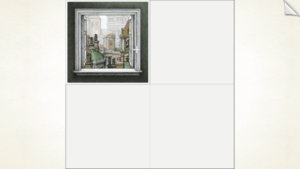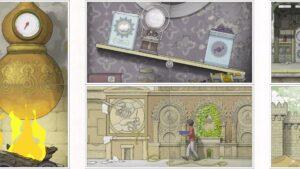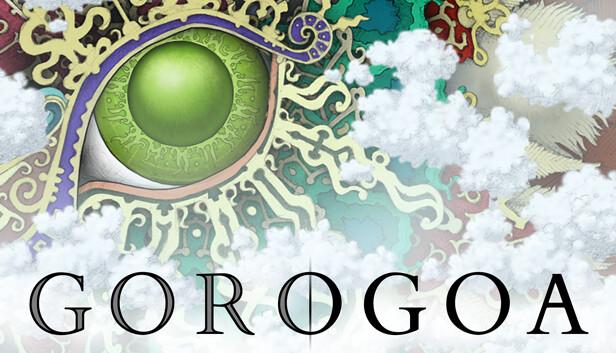For this week’s Critical Play, I played the game Gorogoa. Gorogoa is a puzzle video game developed by Jason Roberts and published by Annapurna Interactive. The game was released for Microsoft Windows, Nintendo Switch, and iOS on 14 December 2017, PlayStation 4 and Xbox One on 22 May 2018, and shortly thereafter an Android and Kindle Fire release. I played this game on my Windows PC. The game is targeted towards players 13+.
In Gorogoa, the game mechanics involve a 2×2 grid where each cell contains a panel that can be moved, zoomed in on, or layered with other panels. Players manipulate these panels to create connections and interactions between them, solving puzzles by aligning elements across different scenes. The panels can be split or combined to reveal new paths and story elements, advancing the narrative. The player’s goal in solving the puzzles is to collect 5 different colored fruits, split into five “chapters.” As players play through each chapter, the puzzles get more complex spatially and temporally. Gorogoa’s puzzle mechanics influence the experience of the game, adding complexity to a seemingly simple 2×2 grid by challenging players to think multi-dimensionally, including spatially and temporally.
The first of Gorogoa’s puzzles introduces the mechanism of space in the simple 2×2 grid. Your first action is to zoom out of the first panel, revealing a broader landscape, where you then zoom in to a different scene and continue the puzzle. This first interaction introduces you to the different ways you can manipulate the panels.

As you progress through the puzzles, you discover new ways to manipulate space other than zooming in and out of scenes in a panel. The next simplest action you can take is to move left, right, up, or down in a scene in a panel. From these two actions, being able to zoom in and out and move the scene in the panel, the panel itself it turned into a three-dimensional puzzle. As you progress through the game, you discover that the panels themselves can be moved around the grid, layered on top of other panels, or taken off of other panels. Panels can also connect with one another and affect other panels. This adds additional complexity to the puzzles in the game. The spatial interactions of three-dimensional panels leads to the spatial and temporal progression of the character in the game. As you complete puzzles, new environments are discovered as you figure out how to collect each colored fruit.

Other than the spatial complexities and interactions of the puzzles, some of the puzzles also incorporate time into their mechanics. These puzzles include the puzzle where you have to navigate through and arrange the panels spatially while a boulder rolls down the building, or the puzzle where you have to align the train tracks before the train comes around. The narration of the game is also non-linear, and the panels on the grid often represent different moments in time that somehow interact with each other to affect the present and the future of the narrative. By completing puzzles, players gain more insight into the character in the game and are able to observe different moments in time through the panels. By incorporating temporal puzzles, the game makes you think about the sequence and timing of your interactions, which in turn affect the non-linear and temporal narrative of the game.
In conclusion, Gorogoa uses a simple 2×2 grid to convey a narrative that is full of spatial and temporal complexities. The four panels themselves represent a spatial concept that can be interacted with to solve the puzzles in the game. By solving the puzzles spatially and temporally, the narrative progresses in a similar fashion, introducing us to new environments and moments in time.




